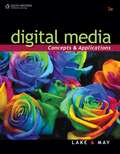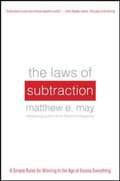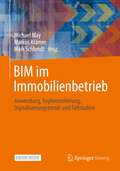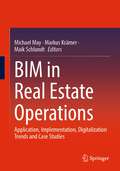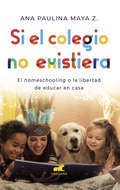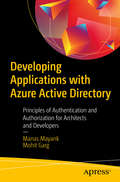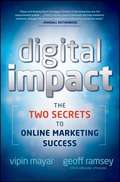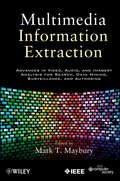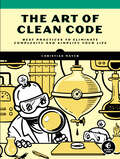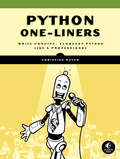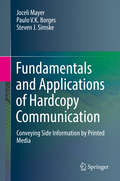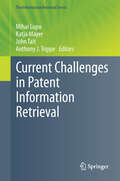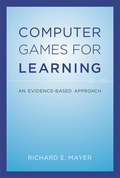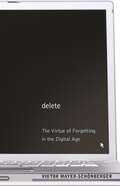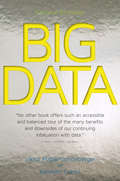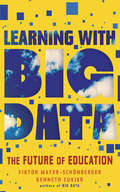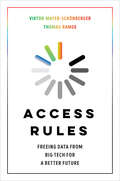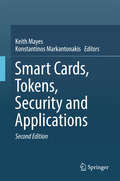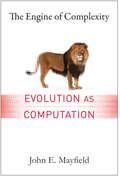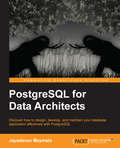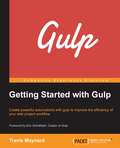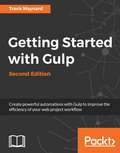- Table View
- List View
Digital Media: Concepts and Applications (3rd Edition)
by Karen May Susan E. L. LakeDIGITAL MEDIA, CONCEPTS AND APPLICATIONS, 3E prepares students for the workplace by teaching them to use business-standard software applications to complete projects and solve problems. The non-software-specific approach gives students a strong foundation in the concepts and practices of digital multimedia and allows the text to focus on the more creative end of business technology.
The Laws of Subtraction: 6 Simple Rules for Winning in the Age of Excess Everything
by Matthew MayWinner of a 2013 Small Business Book Award for Economics The world is more overwhelming than ever before. Our work is deeper and more demanding than ever. Our businesses are more complicated and difficult to manage than ever. Our economy is more uncertain than ever. Our resources are scarcer than ever. There is endless choice and feature overkill in all but the best experiences. Everybody knows everything about us. The simple life is a thing of the past. Everywhere, there's too much of the wrong stuff and not enough of the right. The noise is deafening, the signal weak. Everything is too complicated and time-sucking. Welcome to the age of excess everything. Success in this new age looks different and demands a new skill: Subtraction. Subtraction is defined simply as the art of removing anything excessive, confusing, wasteful, unnatural, hazardous, hard to use, or ugly . . . or the discipline to refrain from adding it in the first place. And if subtraction is the new skill to be acquired, we need a guide to developing it. Enter The Laws of Subtraction. Through a dozen of the most compelling stories of breakthrough innovation culled from 2,000 cases and bolstered by uniquely personal essays contributed by over 50 of the most creative minds in business today, The Laws of Subtraction outlines six simple rules for winning in the age of excess everything, and delivers a single yet powerful idea: When you remove just the right things in just the right way, something very good happens. The Laws of Subtraction features contributions by over 50 highly regarded thinkers, creatives, and executives. On Law #1: What Isn't There Can Often Trump What Is "When you reduce the number of doors that someone can walk through, more people walk through the one that you want them to walk through. " -- SCOTT BELSKY, founder and CEO of Behance and author of Making Ideas Happen On Law #2: The Simplest Rules Create the Most Effective Experience "Keeping it simple isn't easy. By exploiting subtraction in innovation, we've been able to create an environment of freedom and creativity that allows us to thrive. " -- BRAD SMITH, CEO, Intuit On Law #3: Limiting Information Engages the Imagination "Subtraction can mean the difference between a highly persuasive presentation and a long, convoluted, and confusing one. Why say more when you can say less?" -- CARMINE GALLO, author of The Apple Experience On Law #4: Creativity Thrives Under Intelligent Constraints "Here's the key to the conundrum for managers who want to stoke the innovation fire: That close cousin of scarcity, constraint, can indeed foster creativity. " -- TERESA AMABILE, author of The Progress Principle On Law #5: Break Is the Important Part of Breakthrough "If you kill the butterflies in your stomach, you'll kill the dream. Embrace the feeling. Save the butterflies. " -- JONATHAN FIELDS, author of Uncertainty On Law #6: Doing Something Isn't Always Better Than Doing Nothing "When we're faced with the greatest odds against us, often we need to edit rather than add. " -- CHIP CONLEY, cofounder of Joie de Vivre Hospitality and author of Emotional Equations
BIM im Immobilienbetrieb: Anwendung, Implementierung, Digitalisierungstrends und Fallstudien
by Michael May Markus Krämer Maik SchlundtDieses Fachbuch – nicht nur für Praktiker – beschäftigt sich mit allen Facetten und Fragestellungen der Anwendung von Building Information Modeling (BIM) im Immobilienbetrieb und Facility Management (FM).Ausgehend von den Grundlagen und Vorzügen von BIM sowie dessen Entwicklung, werden alle Bereiche im Immobilienbetrieb beleuchtet, bei denen BIM sinnvoll eingesetzt werden kann. Dabei werden BIM- und CAFM-Grundlagen, moderne Digitalisierungstechniken, Datenstandards und Datenaustausch sowie Interoperabilität und Aspekte der Wirtschaftlichkeit von BIM-Projekten ausführlich erläutert. Das Vorgehen bei der BIM-Einführung, Anwendungsszenarien und konkrete Praxisbeispiele runden das Werk ebenso ab wie ein Blick in aktuelle Forschungsthemen und künftige Entwicklungen.
BIM in Real Estate Operations: Application, Implementation, Digitalization Trends and Case Studies
by Michael May Markus Krämer Maik SchlundtThis reference book - not only for practitioners - deals with all facets and issues of the application of Building Information Modeling (BIM) in real estate operations and Facility Management (FM).Starting from the basics and advantages of BIM as well as its development, all areas in real estate operations are illuminated where BIM can be usefully applied. BIM and CAFM basics, modern digitization techniques, data standards and data exchange, as well as interoperability and aspects of the economic viability of BIM projects are explained in detail. The procedure for introducing BIM, application scenarios and concrete practical examples round off the work, as does a look at current research topics and future developments.
Windows 8 for Tablets Plain & Simple
by Simon May<p>Your easy, colorful, SEE-HOW guide to Windows® 8 for tablets! You’ll learn the quickest ways to set up and use Windows 8 with easy-to-follow steps, screenshots, and concise, straightforward language that make learning plain and simple!</p>
Si el colegio no existiera
by Ana Paulina Maya Z.Un libro que habla sobre el Homeschooling o la educación en casa. Ana Paulina Maya lleva trece años educando a sus cuatro hijos en casa y se ha convertido en un referente del homeschooling en Colombia. En este libro explica qué es el homeschooling y desmiente los mitos más frecuentes relacionados con este tema; describe cuáles son los aspectos básicos que se deben tener en cuenta a la hora de tomar la decisión de educar en casa, cómo es el día a día de una familia homeschooler y les da valiosas herramientas a quienes están considerando esta opción para la educación de sus hijos. A partir de descripciones detalladas, sustentos teóricos y su propia experiencia, la autora acompaña a los padres en este camino que cada vez tiene más fuerza en Colombia y en el mundo
Developing Applications with Azure Active Directory: Principles of Authentication and Authorization for Architects and Developers
by Manas Mayank Mohit GargExplore tools for integrating resources and applications with Azure Active Directory for authentication and authorization. This book starts with an introduction to Azure Active Directory (AAD) where you will learn the core concepts necessary to understand AAD and authentication in general. You will then move on to learn OpenID Connect and OAuth along with its flows, followed by a deep dive into the integration of web applications for user-based authentication. Next, you go through user authentication and how to enable the integration of various native applications with AAD. This is followed by an overview of authenticating applications along with a detailed discussion on collaboration with external users and other AD tenants. Moving forward, Developing Applications with Azure Active Directory covers using schemas of AD objects, such as users, to add custom attributes on top of ADD’s predefined attributes. You will see how multi-tenancy can be supported in Azure AD as well as how to design authorization with Azure AD.After reading this book, you will be able to integrate, design, and develop authentication and authorization techniques in Azure Active Directory.What You Will LearnIntegrate applications with Azure AD for authenticationExplore various Azure AD authentication scenariosMaster core Azure AD conceptsIntegrate external users and tenants Who is this book for:The book will be useful for architects and developers, planning to use Azure AD for authentication.
Digital Impact
by Vipin Mayar Geoff RamseyWin online by attracting the right customers and getting the right performance measurementDigital Impact answers the critical questions marketers have about connecting with and influencing consumers online. Written in an easy-to-read, approachable format, this helpful guide presents provocative content along with practical, commonsense methods that can be followed by any businessperson at companies of all sizes. The discussion hones in on two keys to success: building a performance measurement approach that will let you get maximum impact out of your online marketing and ad dollars, and creating magnetic content that attracts customers and keeps them engaged with your brand.Leverage trust and build ROI in social media and mobile spacesGet actionable data, best practices, cases studies, anecdotes, practical coaching tips and strategic insightsEngage customers who typically resist advertising messagesLearn from authors who have extensive experience across major industries and accounts, giving them a wide business appealWhether your budget is corporate-sized or on a shoestring, you'll want to achieve the measurable bottom-line improvements that come with having Digital Impact.
Multimedia Information Extraction: Advances in Video, Audio, and Imagery Analysis for Search, Data Mining, Surveillance and Authoring
by Mark T. MayburyThe advent of increasingly large consumer collections of audio (e.g., iTunes), imagery (e.g., Flickr), and video (e.g., YouTube) is driving a need not only for multimedia retrieval but also information extraction from and across media. Furthermore, industrial and government collections fuel requirements for stock media access, media preservation, broadcast news retrieval, identity management, and video surveillance. While significant advances have been made in language processing for information extraction from unstructured multilingual text and extraction of objects from imagery and video, these advances have been explored in largely independent research communities who have addressed extracting information from single media (e.g., text, imagery, audio). And yet users need to search for concepts across individual media, author multimedia artifacts, and perform multimedia analysis in many domains. This collection is intended to serve several purposes, including reporting the current state of the art, stimulating novel research, and encouraging cross-fertilization of distinct research disciplines. The collection and integration of a common base of intellectual material will provide an invaluable service from which to teach a future generation of cross disciplinary media scientists and engineers.
The Art of Clean Code: Best Practices to Eliminate Complexity and Simplify Your Life
by Christian MayerLearn eight principles to simplify your code and become a more effective (and successful) programmer.Most software developers waste thousands of hours working with overly complex code. The eight core principles in The Art of Clean Coding will teach you how to write clear, maintainable code without compromising functionality. The book&’s guiding principle is simplicity: reduce and simplify, then reinvest energy in the important parts to save you countless hours and ease the often onerous task of code maintenance.Bestselling author Christian Mayer leverages his experience helping thousands perfect their coding skills in this new book. With expert advice and real-world examples, he&’ll show you how to: Concentrate on the important stuff with the 80/20 principle -- focus on the 20% of your code that matters mostAvoid coding in isolation: create a minimum viable product to get early feedbackWrite code cleanly and simply to eliminate clutter Avoid premature optimization that risks over-complicating code Balance your goals, capacity, and feedback to achieve the productive state of FlowApply the Do One Thing Well philosophy to vastly improve functionalityDesign efficient user interfaces with the Less is More principleTie your new skills together into one unifying principle: Focus The Python-based The Art of Clean Coding is suitable for programmers at any level, with ideas presented in a language-agnostic manner.
Python One-Liners: Write Concise, Eloquent Python Like a Professional
by Christian MayerPython programmers will improve their computer science skills with these useful one-liners.Python One-Liners will teach you how to read and write "one-liners": concise statements of useful functionality packed into a single line of code. You'll learn how to systematically unpack and understand any line of Python code, and write eloquent, powerfully compressed Python like an expert.The book's five chapters cover tips and tricks, regular expressions, machine learning, core data science topics, and useful algorithms. Detailed explanations of one-liners introduce key computer science concepts and boost your coding and analytical skills. You'll learn about advanced Python features such as list comprehension, slicing, lambda functions, regular expressions, map and reduce functions, and slice assignments. You'll also learn how to: • Leverage data structures to solve real-world problems, like using Boolean indexing to find cities with above-average pollution • Use NumPy basics such as array, shape, axis, type, broadcasting, advanced indexing, slicing, sorting, searching, aggregating, and statistics • Calculate basic statistics of multidimensional data arrays and the K-Means algorithms for unsupervised learning • Create more advanced regular expressions using grouping and named groups, negative lookaheads, escaped characters, whitespaces, character sets (and negative characters sets), and greedy/nongreedy operators • Understand a wide range of computer science topics, including anagrams, palindromes, supersets, permutations, factorials, prime numbers, Fibonacci numbers, obfuscation, searching, and algorithmic sortingBy the end of the book, you'll know how to write Python at its most refined, and create concise, beautiful pieces of "Python art" in merely a single line.
Fundamentals and Applications of Hardcopy Communication: Conveying Side Information By Printed Media
by Joceli Mayer Steven J. Simske Paulo V.K. BorgesThis book presents covert, semi-covert and overt techniques for communication over printed media by modifying images, texts or barcodes within the document. Basic and advanced techniques are discussed aimed to modulate information into images, texts and barcodes.Conveying information over printed media can be useful for content authentication, author copyright, information and piracy product deterrent, side information for marketing, among other applications. Practical issues are discussed and experiments are provided to evaluate competitive approaches for hard-copy communication.This book is a useful resource for researchers, practitioners and graduate students in the field of hard-copy communication by providing the fundamentals, basic and advanced techniques as examples of approaches to address the hard-copy media distortions and particularities.
Current Challenges in Patent Information Retrieval (The Information Retrieval Series #29)
by Katja Mayer Mihai Lupu Anthony J. Trippe John TaitIntellectual property in the form of patents plays a vital role in today's increasingly knowledge-based economy. This book assembles state-of-the art research and is intended to illustrate innovative approaches to patent information retrieval.
Computer Games for Learning: An Evidence-Based Approach (The\mit Press Ser.)
by Richard E. MayerA comprehensive and up-to-date investigation of what research shows about the educational value of computer games for learning. Many strong claims are made for the educational value of computer games, but there is a need for systematic examination of the research evidence that might support such claims. This book fills that need by providing, a comprehensive and up-to-date investigation of what research shows about learning with computer games. Computer Games for Learning describes three genres of game research: the value-added approach, which compares the learning outcomes of students who learn with a base version of a game to those of students who learn with the base version plus an additional feature; the cognitive consequences approach, which compares learning outcomes of students who play an off-the-shelf computer game for extended periods to those of students who do not; and the media comparative approach, which compares the learning outcomes of students who learn material by playing a game to those of students who learn the same material using conventional media. After introductory chapters that describe the rationale and goals of learning game research as well as the relevance of cognitive science to learning with games, the book offers examples of research in all three genres conducted by the author and his colleagues at the University of California, Santa Barbara; meta-analyses of published research; and suggestions for future research in the field. The book is essential reading for researchers and students of educational games, instructional designers, learning-game developers, and anyone who wants to know what the research has to say about the educational effectiveness of computer games.
Delete
by Viktor Mayer-SchönbergerDelete looks at the surprising phenomenon of perfect remembering in the digital age, and reveals why we must reintroduce our capacity to forget. Digital technology empowers us as never before, yet it has unforeseen consequences as well. Potentially humiliating content on Facebook is enshrined in cyberspace for future employers to see. Google remembers everything we've searched for and when. The digital realm remembers what is sometimes better forgotten, and this has profound implications for us all. In Delete, Viktor Mayer-Schönberger traces the important role that forgetting has played throughout human history, from the ability to make sound decisions unencumbered by the past to the possibility of second chances. The written word made it possible for humans to remember across generations and time, yet now digital technology and global networks are overriding our natural ability to forget--the past is ever present, ready to be called up at the click of a mouse. Mayer-Schönberger examines the technology that's facilitating the end of forgetting--digitization, cheap storage and easy retrieval, global access, and increasingly powerful software--and describes the dangers of everlasting digital memory, whether it's outdated information taken out of context or compromising photos the Web won't let us forget. He explains why information privacy rights and other fixes can't help us, and proposes an ingeniously simple solution--expiration dates on information--that may. Delete is an eye-opening book that will help us remember how to forget in the digital age.
Delete: The Virtue of Forgetting in the Digital Age
by Viktor Mayer-SchönbergerThe hazards of perfect memory in the digital ageDelete looks at the surprising phenomenon of perfect remembering in the digital age, and reveals why we must reintroduce our capacity to forget. Digital technology empowers us as never before, yet it has unforeseen consequences as well. Potentially humiliating content on Facebook is enshrined in cyberspace for future employers to see. Google remembers everything we've searched for and when. The digital realm remembers what is sometimes better forgotten, and this has profound implications for us all.In Delete, Viktor Mayer-Schönberger traces the important role that forgetting has played throughout human history, from the ability to make sound decisions unencumbered by the past to the possibility of second chances. The written word made it possible for humans to remember across generations and time, yet now digital technology and global networks are overriding our natural ability to forget—the past is ever present, ready to be called up at the click of a mouse. Mayer-Schönberger examines the technology that's facilitating the end of forgetting—digitization, cheap storage and easy retrieval, global access, and increasingly powerful software—and describes the dangers of everlasting digital memory, whether it's outdated information taken out of context or compromising photos the Web won't let us forget. He explains why information privacy rights and other fixes can't help us, and proposes an ingeniously simple solution—expiration dates on information—that may.Delete is an eye-opening book that will help us remember how to forget in the digital age.
Big Data: A Revolution That Will Transform How We Live, Work, and Think
by Viktor Mayer-Schönberger Kenneth Cukier<P>A revelatory exploration of the hottest trend in technology and the dramatic impact it will have on the economy, science, and society at large.Which paint color is most likely to tell you that a used car is in good shape? How can officials identify the most dangerous New York City manholes before they explode? And how did Google searches predict the spread of the H1N1 flu outbreak? The key to answering these questions, and many more, is big data. <P> “Big data” refers to our burgeoning ability to crunch vast collections of information, analyze it instantly, and draw sometimes profoundly surprising conclusions from it. This emerging science can translate myriad phenomena—from the price of airline tickets to the text of millions of books—into searchable form, and uses our increasing computing power to unearth epiphanies that we never could have seen before. <P> A revolution on par with the Internet or perhaps even the printing press, big data will change the way we think about business, health, politics, education, and innovation in the years to come. It also poses fresh threats, from the inevitable end of privacy as we know it to the prospect of being penalized for things we haven’t even done yet, based on big data’s ability to predict our future behavior.In this brilliantly clear, often surprising work, two leading experts explain what big data is, how it will change our lives, and what we can do to protect ourselves from its hazards. Big Data is the first big book about the next big thing.
Learning with Big Data
by Viktor Mayer-Schönberger Kenneth CukierHomework assignments that learn from students. Courses tailored to fit individual pupils. Textbooks that talk back. This is tomorrow's education landscape, thanks to the power of big data. These advances go beyond the much-discussed rise of online courses. As the New York Times-bestselling authors of Big Data explain, the truly fascinating changes are actually occurring in how we measure students' progress and how we can use that data to improve education for everyone, in real time, both on- and offline. Learning with Big Data offers an eye-opening, insight-packed tour through these new trends, for educators, administrators, and readers interested in the latest developments in business and technology.
Access Rules: Freeing Data from Big Tech for a Better Future
by Viktor Mayer-Schönberger Thomas RamgeA powerful and urgent call to action: to improve our lives and our societies, we must demand open access to data for all. Information is power, and the time is now for digital liberation. Access Rules mounts a strong and hopeful argument for how informational tools at present in the hands of a few could instead become empowering machines for everyone. By forcing data-hoarding companies to open access to their data, we can reinvigorate both our economy and our society. Authors Viktor Mayer-Schönberger and Thomas Ramge contend that if we disrupt monopoly power and create a level playing field, digital innovations can emerge to benefit us all. Over the past twenty years, Big Tech has managed to centralize the most relevant data on their servers, as data has become the most important raw material for innovation. However, dominant oligopolists like Facebook, Amazon, and Google, in contrast with their reputation as digital pioneers, are actually slowing down innovation and progress by withholding data for the benefit of their shareholders––at the expense of customers, the economy, and society. As Access Rules compellingly argues, ultimately it is up to us to force information giants, wherever they are located, to open their treasure troves of data to others. In order for us to limit global warming, contain a virus like COVID-19, or successfully fight poverty, everyone—including citizens and scientists, start-ups and established companies, as well as the public sector and NGOs—must have access to data. When everyone has access to the informational riches of the data age, the nature of digital power will change. Information technology will find its way back to its original purpose: empowering all of us to use information so we can thrive as individuals and as societies.
Smart Cards, Tokens, Security and Applications
by Keith Mayes Konstantinos MarkantonakisProviding a broad overview of the many card systems and solutions in practical use today, this state-of-the art work is written by contributing authors who are active researchers and acknowledged experts in their field. A single book cannot be found to match both the breadth and depth of content. The book combines a cross-discipline overview of smart cards, tokens and related security and applications plus a technical reference to support further research and study. A step-by-step approach educates the reader and by the end of the book the reader should be able to play an educated role in a smart card related project.
The Engine of Complexity: Evolution as Computation
by John MayfieldThe concepts of evolution and complexity theory have become part of the intellectual ether permeating the life sciences, the social and behavioral sciences, and, more recently, management science and economics. In this book, John E. Mayfield elegantly synthesizes core concepts from multiple disciplines to offer a new approach to understanding how evolution works and how complex organisms, structures, organizations, and social orders can and do arise based on information theory and computational science. Intended for the intellectually adventuresome, this book challenges and rewards readers with a nuanced understanding of evolution and complexity that offers consistent, durable, and coherent explanations for major aspects of our life experiences. Numerous examples throughout the book illustrate evolution and complexity formation in action and highlight the core function of computation lying at the work's heart.
PostgreSQL for Data Architects
by Jayadevan MaymalaThis book is for developers and data architects who have some exposure to databases. It is assumed that you understand the basic concepts of tables and common database objects, including privileges and security.
Getting Started with Gulp
by Travis MaynardIf you are a developer who is new to build systems and task runners but have prior experience with web development, then this book is the right choice for you. You need to have some basic knowledge of HTML, CSS, and JavaScript.
Getting Started with Gulp – Second Edition
by Travis MaynardCreate powerful automations with Gulp to improve the efficiency of your web project workflow About This Book • Gain a solid understanding of Gulp and write your own custom tasks from scratch • Discover ways to add additional functionality to improve your tasks • Get up-and-running with new features added to the latest version of Gulp Who This Book Is For This book is targeted at developers who are new to build systems and task runners but who have had prior experience with web development; a basic knowledge of HTML, CSS, and JavaScript is assumed. It guides the reader through the process of using Gulp to automate several common development tasks so that they can save time and focus on what is most important: writing great code. What You Will Learn • How to use a command-line interface. • Learn about Gulp, Node.js, and npm and how they work together. • Create a Gulpfile from scratch and implement it into a project. • Write basic tasks that will concatenate, minify, compress, and pre-process your files. • Write advanced tasks that will run a local server, sync file changes to your browser, and allow you to write client-side JavaScript using ES2015. In Detail This book is a hands-on guide to get you up to speed with gulp. You will quickly learn how to install, configure, and run your own build system. It will instill you with the ability to automate several common development tasks to vastly improve your development workflow. This book first demonstrates various Gulp use cases before running through the steps of configuring, running, and customizing Gulp, providing you with core concepts of gulp, node.js, and npm. Diving a bit deeper into the gulp ecosystem, we will discuss when and why to use a node module instead of a gulp plugin. We will also go over a few issues that we can run into while using gulp and learn about ways to work around them to improve your gulp experience. By the end of this book, you will be able to create your very own gulp build from scratch, create and maintain tasks and project builds, and automate your workflow with plugins and custom tasks. Style and approach A step-by-step guide to help you get started with the latest features
Programming for Unified Communications with Microsoft® Office Communications Server 2007 R2
by Chris Mayo Kurt De Ding Oscar Newkerk Rui Maximo Vishwa RanjanDirect from the Microsoft Office Communications Server product team, get the hands-on guidance you need to streamline your organization's real-time, remote communication and collaboration solutions across the enterprise and across time zones.
